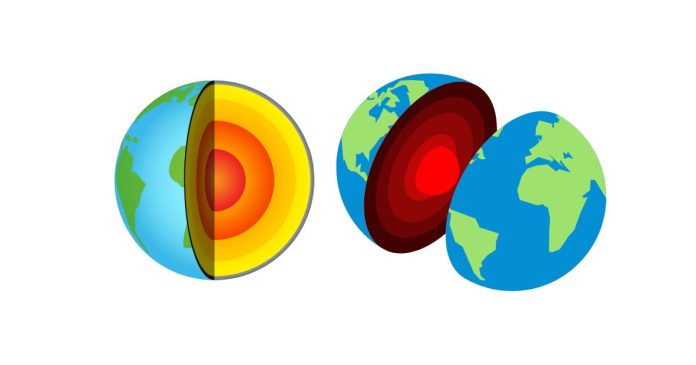The Earth’s structure is composed of multiple layers, each playing a crucial role in the planet’s overall composition and behavior. One of the most fascinating and enigmatic parts of the Earth’s interior is the outer core, a layer composed primarily of molten metals like iron and nickel. Understanding the melting point of the outer core can provide valuable insight into both the Earth’s formation and its ongoing geological processes. So, what exactly is the melting point of the outer core, and why is it significant?
The Structure of the Earth
To understand the melting point of the outer core, it’s important to first have an overview of the Earth’s internal layers. The Earth is divided into several distinct layers:
- Crust: The outermost layer, which is solid and relatively thin compared to the other layers.
- Mantle: Beneath the crust, the mantle is semi-solid and experiences convection currents that drive the movement of tectonic plates.
- Outer Core: Below the mantle, the outer core is primarily liquid and composed mainly of iron and nickel.
- Inner Core: The innermost layer is solid and also made mostly of iron and nickel, but it remains solid due to the immense pressure at the Earth’s center.
The outer core is unique because it is in a liquid state, unlike the solid inner core beneath it. The key to this difference lies in the varying conditions of temperature and pressure at these depths.
What is the Melting Point of the Outer Core?
The melting point of the materials in the outer core—primarily iron and nickel—depends on temperature and pressure. While pure iron has a melting point of around 1,500°C (2,732°F) at the Earth’s surface, the conditions in the outer core are far more extreme, allowing for melting to occur despite the presence of these high-melting metals.
In the outer core, temperatures range from about 4,000°C (7,232°F) near the mantle boundary to around 6,000°C (10,832°F) near the inner core boundary. These temperatures are high enough to keep the iron and nickel in a molten state, even though the pressure is far higher than at the Earth’s surface. The immense pressure in the outer core prevents the iron from solidifying, despite the high temperatures.
The Role of Pressure in the Melting Point
Pressure plays a critical role in determining the melting point of materials deep inside the Earth. As you move deeper into the Earth, the pressure increases significantly, which affects the state of materials. In the case of the outer core, the pressure is so great that it keeps the molten metals in a liquid form despite their naturally high melting points.
At the depth of the outer core (approximately 2,900 to 5,150 kilometers below the Earth’s surface), the pressure is about 330 to 360 gigapascals (GPa), which is more than 3 million times the atmospheric pressure at sea level. This pressure, combined with the high temperatures, allows the outer core to remain in a liquid state, contributing to Earth’s magnetic field and geological activity.
Significance of the Outer Core’s Melting Point
Understanding the melting point of the outer core is more than just a scientific curiosity—it’s essential for understanding the dynamics of the Earth’s magnetic field. The movement of the molten metals in the outer core generates the Earth’s magnetic field through a process called thermoelectromagnetic convection, which is powered by the heat from the inner core and the movement of materials in the outer core. This magnetic field is vital for protecting the Earth from harmful solar radiation and for maintaining conditions that are conducive to life.
Additionally, the behavior of the molten outer core influences the movement of tectonic plates, volcanic activity, and other geological phenomena. These processes are a direct result of the heat flow and pressure conditions in the outer core.
The melting point of the outer core is not a simple, fixed number—it is a dynamic interplay between extreme temperatures and pressures deep beneath the Earth’s surface. With temperatures ranging from 4,000°C to 6,000°C and pressures up to 360 GPa, the materials in the outer core—primarily iron and nickel—remain molten and contribute to important processes like the generation of the Earth’s magnetic field. The conditions in the outer core are a fascinating example of how temperature, pressure, and material properties interact to shape our planet’s internal systems.
Understanding the melting point of the outer core not only provides insights into Earth’s geology but also helps scientists learn more about how our planet operates and evolves over time.


